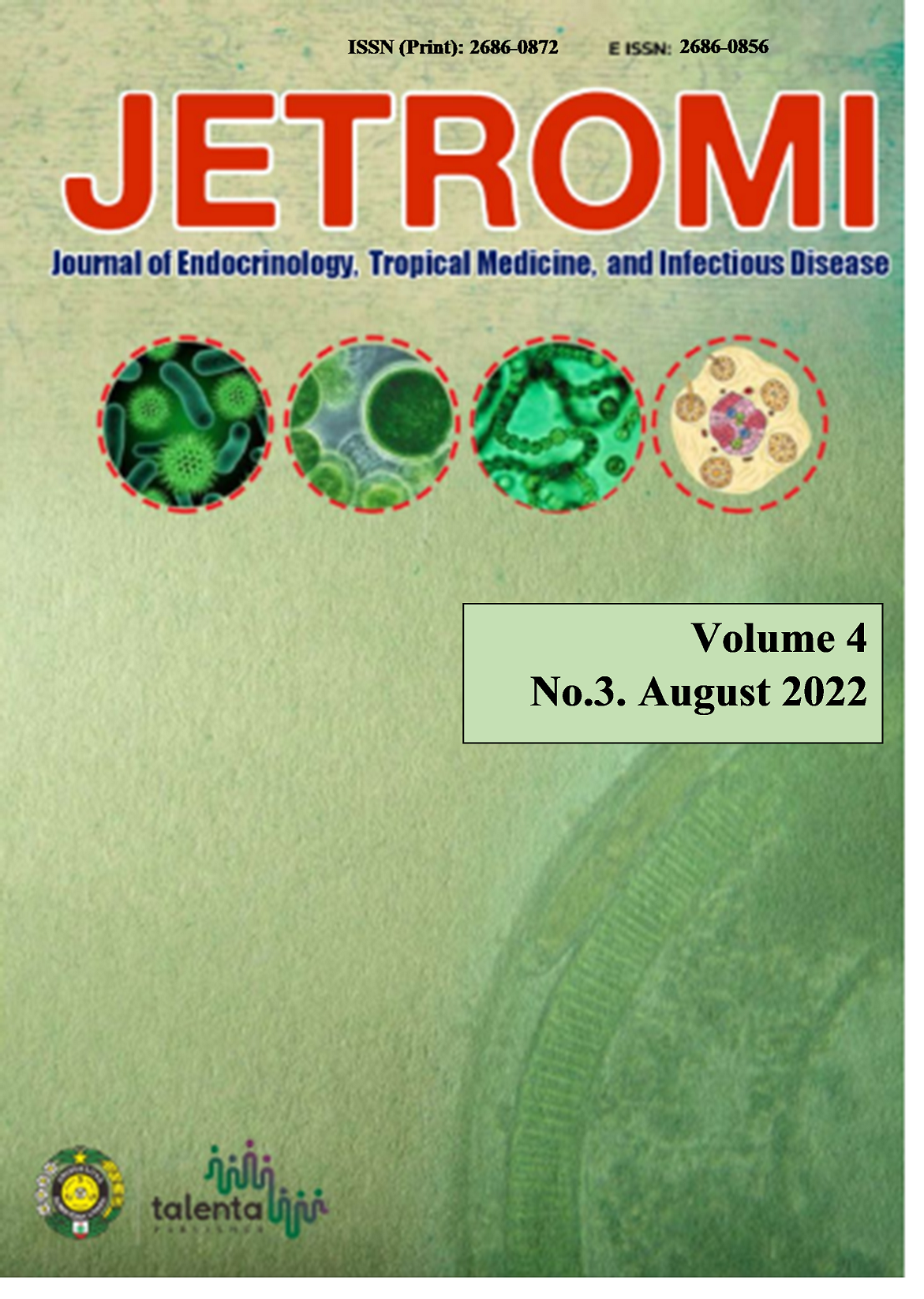Differences In Glycosylated Hemoglobin To Conventional Cardiovascular Risk Factors In Obesity
DOI:
https://doi.org/10.32734/jetromi.v4i3.9578Keywords:
HbA1c, Obesity, Cardiovascular RiskAbstract
Background: Glycosylated hemoglobin (HbA1c) has been used as an index for clinical diagnosis of diabetes which is closely related to the complications of cardiovascular. The purpose of the study was to assess the differences in HbA1c against conventional cardiovascular risk in obese patients.
Method: This cross-sectional study was conducted on obese patients (BMI > 25). This study included 40 obese patients, whereas those with a history of CVD, thyroid disorders, or currently on lipid-lowering agents were excluded. HbA1c is divided over HbA1c < 5.6Â and HbA1c > 5.6 (prediabetes), body mass index (BMI) were measured using standard methods. Laboratory assessment included venous blood samples in a fasted state for the determination of components of the lipid profile [total cholesterol (TC), HDL-C, and TG], HbA1c, homeostatic model assessment for insulin resistant (HOMA-IR) using the formula: insulin x fasting glucose / 405, C-reactive protein (CRP), and adiponectin.
Result: 40 obese patients participated in the study with an age of 41.7±6.0 years and a BMI of 33.1±5.0 kg/m2, and a significant correlation between HbA1c and age and HOMA-IR. All cardiovascular risk factors tend to increase but increased significantly at age, and TG (p<0.5).
Conclusion: In this study, the average HbA1c was significantly correlated with age and HOMA-IR, and all lipid parameters of HbA1c > 5.6 (prediabetes) tended to be higher than normal obesity.
Downloads
Downloads
Published
Issue
Section
License
Copyright (c) 2022 Journal of Endocrinology, Tropical Medicine, and Infectious Disease (JETROMI)

This work is licensed under a Creative Commons Attribution-NonCommercial-ShareAlike 4.0 International License.
The Authors submitting a manuscript do so on the understanding that if accepted for publication, copyright of the article shall be assigned to Journal of Endocrinology, Tropical Medicine and Infectious Diseases (JETROMI).
Copyright encompasses exclusive rights to reproduce and deliver the article in all form and media. The reproduction of any part of this journal, its storage in databases and its transmission by any form or media, will be allowed only with a written permission from Journal of Endocrinology, Tropical Medicine and Infectious Diseases (JETROMI).








